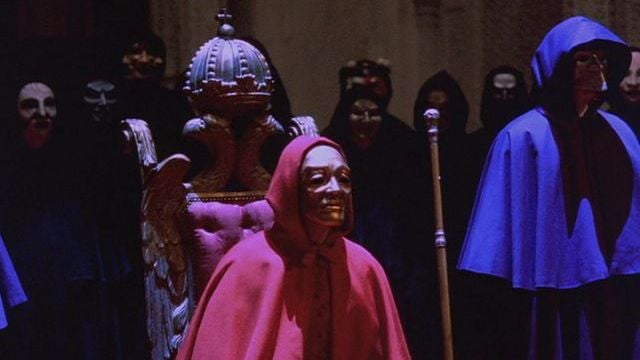The Bourbaki also disdained socalled applied mathematics, including probability theory and dynamics, for its lack of purity, even though it has yielded much mathematical fruit in the past 50 years. Learning and Teaching Mathematics, No. 4 Page 38 Bourbaki: A Secret Society of Mathematicians by Maurice Mashaal (translated into English by overview of some of the key areas of modern mathematics that the Bourbaki turned their attention to. The book is wellillustrated with photographs so you get a real sense of the people behind the. Not for Nicolas Bourbaki, one of the main figures of 20thcentury mathematics. Although still somewhat confidential, his eternal youth is no enigma: the name is the shared pseudonym of a society of mathematicians, whose membersrenewed over timeendeavor to publish a structured presentation of the discipline in the form of a monumental. The list of members has always been a secret (an open secret). Without having any criterion of be mathematics of the 30's, Bourbaki has turned steadily tried to play at being a secret society. It was quite ri diculous because, of course, we could not remain clan destine. In the 1930s, a group of French mathematicians formed a secret society in order to write a series of rigorous mathematics texts under the collective pseudonym Nicolas Bourbaki that. Secret society of mathematics Circle Books Bourbaki: Edition): (FA) MO LI SI MA XIA ER HU ZUO XUAN. Bourbaki: a secret society of mathematicians ( ). Our mission is to further the interests of mathematical research, scholarship and education. Bourbaki: A Secret Society of Mathematics Edition 1 The name Bourbaki is known to every mathematician. Many also know something of the origins of Bourbaki, yet few know the full story. Nicolas Bourbaki is the collective pseudonym under which a group of (mainly French) 20thcentury mathematicians wrote a series of books presenting an exposition of modern advanced mathematics, beginning in 1935. The famous Sminaire Bourbaki (discussed at some length in Mashaals book) takes a lot of the credit for this, of course, given the magnificent forum it supplies to its participants for the dissemination of avant garde mathematics. Bourbaki: a secret society of mathematics (book, Bourbaki: a secret society of mathematics. stubborn priests Bourbaki's Elements de Mathematique sh. The name Bourbaki is known to every mathematician. Many also know something of the origins of Bourbaki, yet few know the full story. In 1935, a small group of young mathematicians in France decided to write a fundamental treatise on analysis to replace the standard texts of the time. Buy Secret society of mathematics Circle Books Bourbaki: mathematicians by ( FA ) MO LI SI MA XIA ER ZHU (ISBN: ) from Amazon's Book Store. Everyday low prices and free delivery on. The Bourbaki also ignored category theory, even though one of its inventors (Samuel Eilenberg) was a member of the group for a while. Today category theory is the dominant framework for describing the fundamental structures of mathematics. Nicolas Bourbaki is the collective pseudonym under which a group of (mainly French) 20thcentury mathematicians wrote a series of books presenting an exposition of modern advanced mathematics, beginning in 1935. With the goal of founding all of mathematics on set theory, the group strove for rigour and generality. Their work led to the discovery of several concepts and terminologies still. In the 1930s, a group of young French mathematicians led an uprising that revolutionized mathematics. France had lost most of a generation in the First World War, so the emerging hotshots in. a secret society was an appealing romantic notion, he added, althoughwhile it was a subject of mathematics journals, 4 Bourbaki selected the highly respected scientific publisher Hermann, who was given the copyrights to The name Bourbaki is known to every mathematician. Many also know something of the origins of Bourbaki, yet few know the full story. In 1935, a small group of young mathematicians in France decided to write a fundamental treatise on analysis to replace the standard texts of the time. Destination page number Search scope Search Text Search scope Search Text He was the name taken by a secret society of French mathematicians with some very odd rules. Nicolas Bourbaki spent much of the twentieth century publishing rigorous and revolutionary papers on. Bourbaki, A Secret Society of Mathematicians and. The Artist and the Mathematician. Maurice Mashaal AMS, June 2006. 00, 260 pages For mathematicians, Bourbaki represents pure mathematics par excellence and its work is the paradigm of a rather dry mathematical style, combining axiomatics with a meticulously abstract method of presentation. The name Bourbaki is known to every mathematician. This book presents accounts of the origins of Bourbaki, their meetings, their seminars, and the members themselves. Bourbaki: A Secret Society of Mathematics But despite differences in their content, both works share a common form; both feature a secret society that conspires to control history, and both establish fixed, knowing subjects, in Allen's words, those who have taken the time to study the subject, and in Reed's words, those who own their own minds. The name Bourbaki is known to every mathematician. Many also know something of the origins of Bourbaki, yet few know the full story. In 1935, a small group of young mathematicians in France decided to write a fundamental treatise on analysis to replace the standard texts of the time. A nice explanation of who comprised Bourbaki and how they created their semisecret society and its impact upon modern mathematics as well as other areas. Nicolas Bourbaki is the collective pseudonym under which a group of (mainly French) 20thcentury mathematicians wrote a series of books presenting an exposition of modern advanced mathematics, beginning in 1935. Atiyah, Michael: CommentaryBourbaki, A Secret Society of Mathematicians and the Artist and the MathematicianA Book Review, Notices of the American Mathematical Society. The name Bourbaki is known to every mathematician. Many also know something of the origins of Bourbaki, yet few know the full story. In 1935, a small group of young mathematicians in France decided to write a fundamental treatise on analysis to replace th The name Bourbaki is known to every mathematician. Many also know something of the origins of Bourbaki, yet few know the full story. In 1935, a small group of young mathematicians in France decided to write a fundamental treatise on analysis to replace the standard texts of the time. Bourbaki is the name of an everchanging group of some of the most brilliant and original mathematicians that ever lived. Their project was to write a series of textbooks about the parts of mathematics that everyone used, in a rigorous, clear and precise manner. Maurice Mashaal: Bourbaki a secret society of Mathematicians. American Mathematical Society, 2006, Review von Michael Atiyah, Notices AMS, Oktober 2007 Andr Weil: The Apprenticeship of a mathematician. 1992 (seine Autobiographie) Secret society is a bit over the top! I always had the impression it had the feeling more of a running joke; from the article: In the 1950s, Ralph Boas of Northwestern University wrote an article for the Encyclopaedia Britannica on Bourbaki, explaining that it was. of mathematics under the name Nicolas Bourbaki, taken by Weil from an obscure general of the FrancoGerman War. Bourbaki became a selfselecting group of young mathematicians who were strong on algebra, and the individual Bourbaki members were interested in the Weil conjectures. Bourbaki and The Artist and the Mathematician Review Bourbaki, A Secret Society of Mathematicians and The Artist and the Mathematician Revi Book Review Bourbaki, A Secret Society of Mathematicians and The. content in mathematics by the training in formal proofs and manipulation of abstract notions. Bourbakis friend Saunders Mac Lane at the University of Chicago. Weil then came to my o ce to drop a Bourbaki, A Secret Society of Mathematicians (originally puablished as: Bourbaki. 1150 Notices of the AMs VoluMe 54, NuMber 9 Book Review Bourbaki, A Secret Society of Mathematicians and The Artist and the Mathematician Reviewed by Michael Atiyah Bourbaki, A Secret Society of Mathematicians The name Bourbaki is known to every mathematician. Many also know something of the origins of Bourbaki, yet few know the full story. In 1935, a small group of young mathematicians in France decided to write a fundamental treatise on analysis to replace the standard texts of the time. Nicolas Bourbaki is the collective pseudonym under which a group of (mainly French) 20thcentury mathematicians wrote a series of books presenting an exposition of modern advanced mathematics, beginning in 1935. Nicolas Bourbaki was a fictional mathematician invented by a group of French academics in the 1930s. Over a period of about fifty years, the group published a series of densely worded books supposedly written by Bourbaki. Their aim in doing so was to make mathematics as abstract and divorced from physical intuition as possible. Teissier attained his doctorate from Paris Diderot University in 1973, under supervision of Heisuke Hironaka. He was a member of Nicolas Bourbaki. In 2012 he became a fellow of the American Mathematical Society. Although Bourbaki introduced new terminology, some of which has become commonplace, there is no new mathematics in the work: it is a presentation of preexisting mathematical work as a pedagogical tool and toolbox for research mathematicians. lments de mathmatique is a treatise on mathematics by the collective Nicolas Bourbaki, composed of twelve books (each divided into one or more chapters). Bourbaki: A Secret Society of Mathematicians. Translated from the French by Anna Pierrehumbert..











